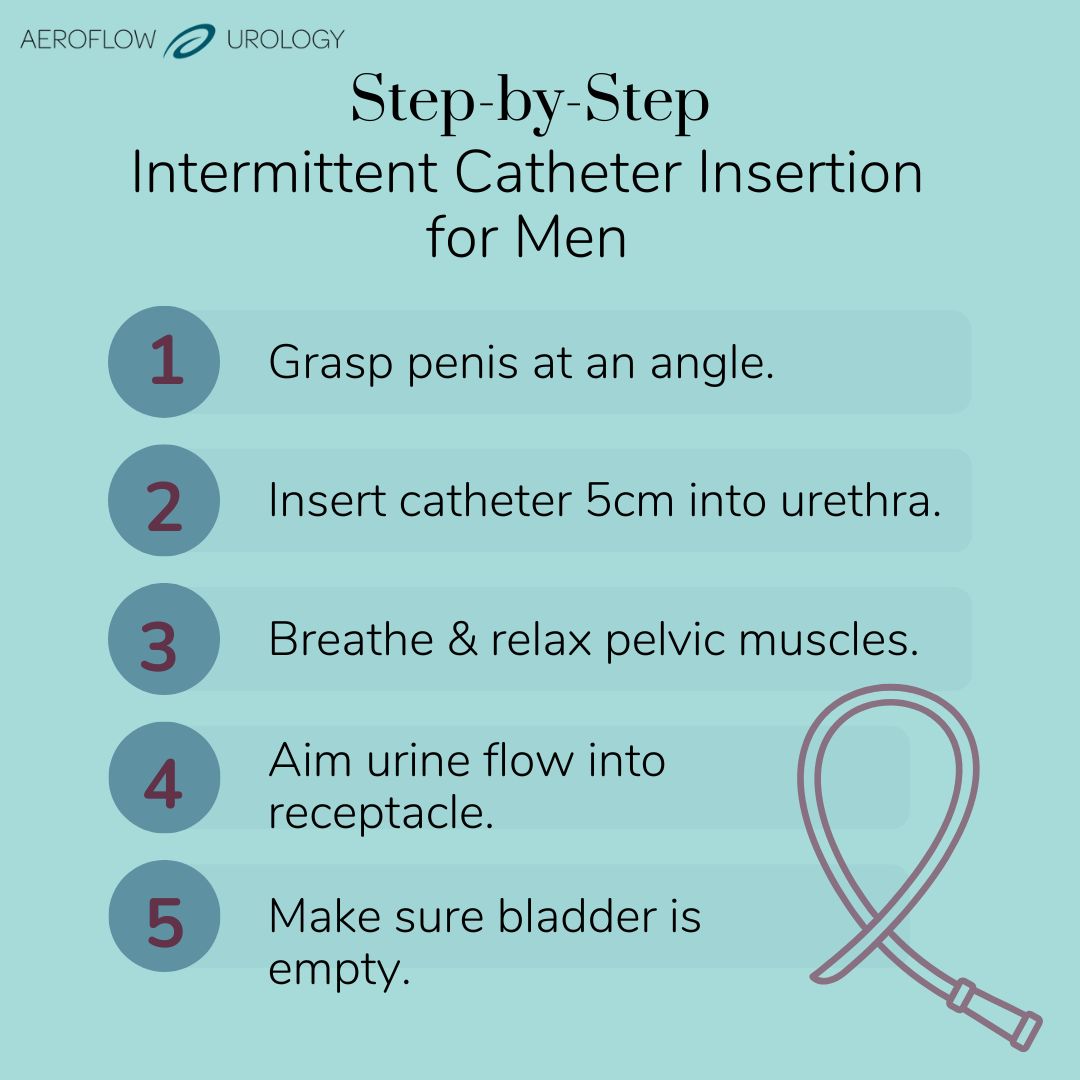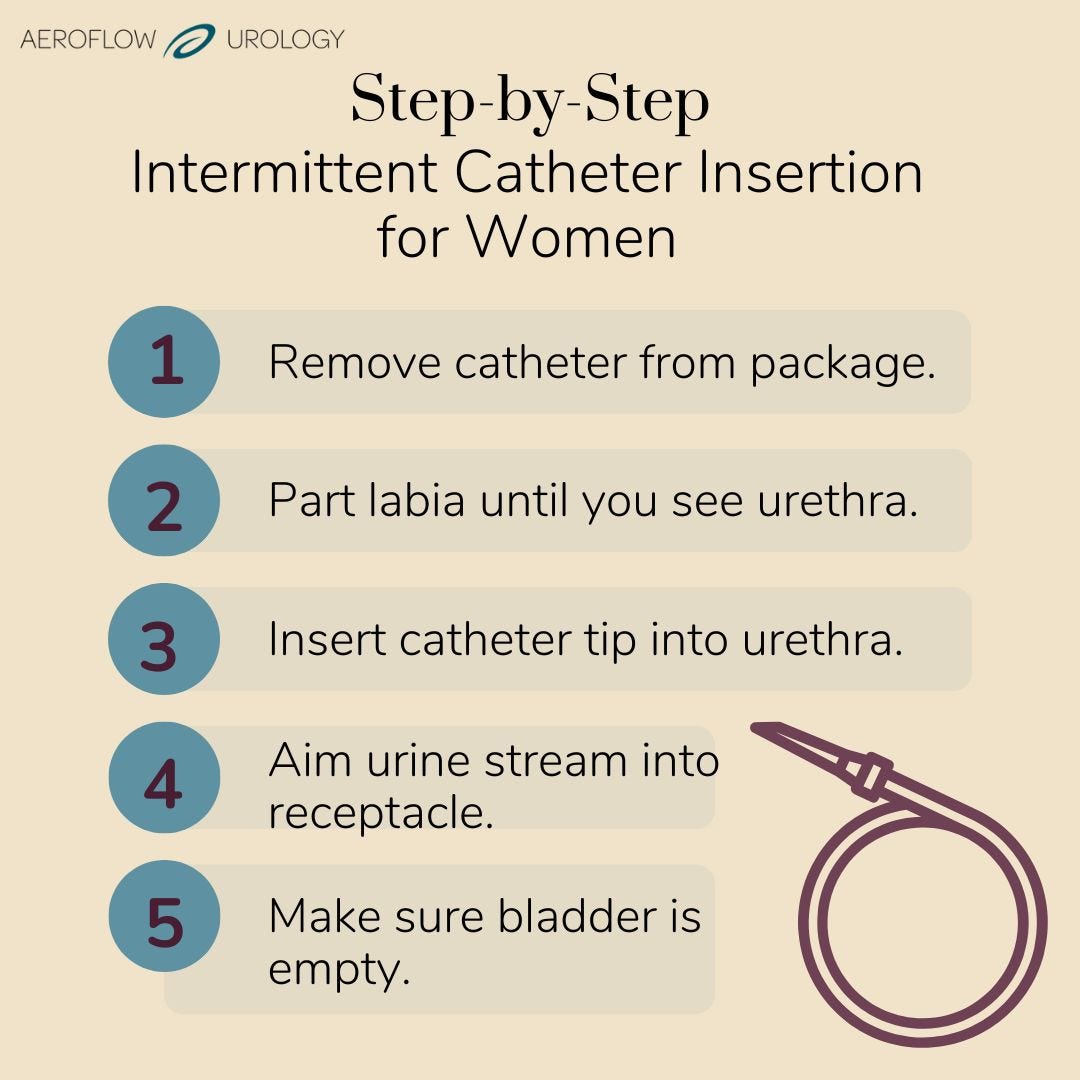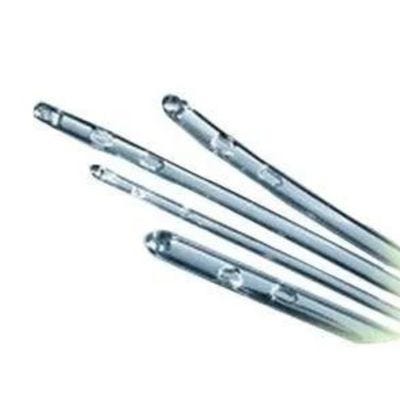This piece has been medically reviewed by Susie Gronski, PT, DPT, Medical Advisor to Aeroflow Urology.
People faced with urinary incontinence or other medical necessities may find themselves asking: Just what is an intermittent catheter?
And this makes sense. The wide variety of catheterization products available and the myriad of conditions necessitating their use make it difficult to determine which urinary catheters are suitable for you.
Read this post to have all of your intermittent catheterization questions answered.
Check Your Eligibility
2 Easy Steps
Discover the catheter supplies covered by your insurance.
What Is an Intermittent Catheter?
Intermittent catheters are intended for people to self-insert through the urethra and into the bladder themselves and are used only when you're ready to urinate.
In addition, by using intermittent catheters, you'll experience increased comfort between urinary events and a decreased likelihood of urinary tract infections or other complications.
Choosing the Right Intermittent Catheter
The difficulty with catheter insertion is one of the most common barriers to frequent catheterization and adherence to prescribed treatment plans set up by people's doctors. In light of this, we recommend that you use an intermittent hydrophilic catheter.
Hydrophilic catheters are lubricated with sterile water rather than gel, more closely mimicking our body’s natural fluids and allowing for easier clean-up. This produces greater ease of catheter insertion, helping encourage users to use their catheters as often as their prescription recommends, preserving their health and treatment integrity.
How to Find the Right Size Intermittent Catheter
Intermittent catheters have diameters that are measured in french sizes. One french size is equivalent to .33mm in diameter. The most commonly used french sizes are 14 for a male and 12 for a female. To figure out which diameter catheter you need, get free samples from Aeroflow Urology.
How Often Should You Catheterize
You should catheterize when you feel your bladder is full. Doing so will help you reduce the pressure in your bladder.
Intermittent Catheter Types
Intermittent catheters come in a variety of shapes, sizes, and tips. Your doctor will determine the most appropriate type for your needs.
Straight Tip Catheters
Straight tip catheters have a simple design with a straight tip with holes or eyelets that allow urine to drain directly into the toilet. These catheters are often referred to as the original catheter because not much has changed from their initial creation. Some straight catheters come pre-lubricated, and others must be manually lubricated before insertion. Both types are easy to use.


Coudé Tip Catheters
Coudé tip catheters are similar to straight catheters, only they have a slightly curved tip. Coudé (coo-day) is a French term for bend or elbow. The unique curved ends of coudé tip catheters help you easily guide past tight spots, blockages, or enlarged prostates to empty the bladder.
Closed System Catheters
Closed system catheters are sterilized catheters that come with a collection bag (plastic bag) and introducer tip. The tip is a silicone sheath that slides into the urethra for the catheter to pass through. This prevents bacteria that cause urinary tract infections (UTIs) from passing through the urethra entrance and being called to the bladder.
Hydrophilic Catheters
Hydrophilic catheters feature a lubricated coating to provide a smooth insertion and removal process. Unlike other catheter types, the water stays on even after insertion, making the removal process easy.
Antibacterial Catheters
Antibacterial catheters are a newer type of catheter. They’re gaining popularity because they’re coated with nitrofurazone, an antibacterial agent that helps prevent urinary tract infections (UTI).
How to Get Intermittent Catheters
By adhering to the guidance of their medical professional, people properly utilizing intermittent catheters can see a dramatic increase in quality of life.
If you are suffering from urinary incontinence or other conditions that may require intermittent catheters, fill out our Qualify Through Insurance form or call toll-free 844-276-5588 to see if Aeroflow Urology can help you get the catheters you need at little to no cost.
Watch our video below to see how it works.

How to Use Intermittent Catheters
Adjusting to using urinary catheters can be a drastic lifestyle change for many people. Despite advances in medical technology that make catheters more comfortable, intuitive, and discrete, there are still manual processes involved in this procedure that can sometimes be performed several times daily.
If patients do not utilize good practices when catheterizing, they will not only render their treatment uncomfortable or even ineffective; it may adversely affect their health. By nature of how often they must be changed for many people, Intermittent catheters are among the most essential for developing good catheterization practices. If you learn how to use an intermittent catheter safely and routinely, you can dramatically improve your quality of life.
Preparing for Insertion
For both males and females, how to use an intermittent catheter has some universal standards which should always be adhered to for maximum effectiveness and safety.
Before taking any action, you should ensure that all relevant supplies such as gloves, catheters, lubricants, or antiseptics are nearby and easily accessible. You should always wash your hands thoroughly with soap and warm water.
If possible, utilizing gloves after hand washing can be an excellent extra step to prevent contamination and urinary tract infections. A collection bag or other receptacle should also be easily accessible. By taking these precautions and steps every catheterization, you will be more comfortable and preserve the sterility of your catheters.
While intermittent catheters are known as an in-and-out catheters, it may take a bit of practice to master. However, you’ll get the hang of it after a few uses.
Just remember that maintaining sterility while practicing clean intermittent self-catheterization is vital.
Here are some tips for easy catheterization:
- Dress in clothes that make it quick and easy to access your penis or vagina.
- Wash your genitals with warm, soapy water or antiseptic wipes, then dry the area.
- Wash your hands with warm soapy water and thoroughly dry them.
- Open your catheter packet, do not remove it. Place the clear side down on a flat, clean surface.
- Don’t touch the catheter, but remove it by slowly peeling the paperback.
- Add lubricating jelly if needed.
- Gently use the package to pick the catheter up and use your dominant hand to peel back the clear packet to reveal the tip.
How Long to Leave a Catheter In
You should only leave your intermittent catheter in for as long as it takes to empty your bladder.
Step-by-Step Insertion Guide for Men
For men, using an intermittent catheter can sometimes be challenging, given the overall length of the catheter. But, with practice, it will get easier. Here's a step-by-step guide for men when inserting an intermittent catheter.


- Use your free hand to grasp your penis and hold it at an angle.
- Slowly insert the end of the catheter into the urethra about 5cm, then remove the rest of the packaging paper.
- You may notice a little resistance when the tip of the catheter meets your prostate gland or sphincter muscles, but gently breathing and relaxing the pelvic muscles will allow the catheter to pass. If you cannot pass, avoid using force and contact your healthcare provider, as you may need a catheter with a coudé tip.
- Position your penis as usual and wait for the urine to begin flowing. Aim it into the proper receptacle.
- Cough and press on your bladder to ensure it’s completely empty (after voiding).
Always wash your hands with soap and water after insertion.
Step-by-Step Insertion Guide for Women
Many of the same precautions for male patients should be followed, particularly utilizing lubricant for comfort. However, female users will often find that a sitting or lying position will provide the greatest ease of catheterization. Using a mirror will also aid in making it easier to locate the urinary opening.
- Pick up the catheter through the packaging and remove it until you see the tip.
- Gently part your labia until you see your urethra. (Using a handheld mirror can help).
- Gently insert the tip of the catheter into the urethral opening until urine begins to flow.
- Aim the urine stream into the proper receptacle. Contact your healthcare provider if you experience any leakage around your catheter or pain during self-catheterization.
- Gently press on your bladder and cough to ensure it’s completely empty (after voiding).


Complications
Complications that may arise from intermittent catheterization include:
- Urethritis
- Urethral trauma.
- False passage.
- Strictures
Intermittent Catheter Products
How to Get Catheter Supplies for Free
The process of how to change an intermittent catheter can seem to be daunting at first, but with proper education, practice, and making sure that patients are set up with the right catheter product, it does not have to be uncomfortable, embarrassing, or inconvenient.
With Aeroflow Urology, you may be eligible to receive free catheter supplies through your Medicaid or private insurance plan.
Want to see if you qualify? The process is simple!
- Fill out our qualify form.
- Once approved, a specialist will reach out to you to send you catheter samples, complete the necessary paperwork, and answer any questions you have.
- Once you’ve chosen your products, they’ll be shipped directly to your home in discreet packaging.
Information provided on the Aeroflow Urology blog is not intended as a substitute for medical advice or care. Aeroflow recommends consulting your healthcare provider if you are experiencing medical issues relating to incontinence.













